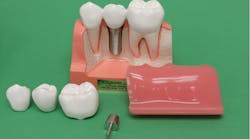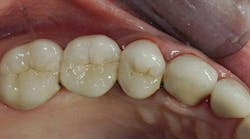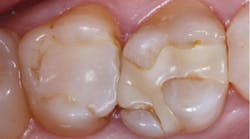Q: Since the recession, followed by COVID-19, it has been difficult to regain the same level of treatment plan acceptance we had before those unfortunate events. I have a few new dental assistants, and I want to show them the best ways to educate our patients. What are your suggestions for educating patients? I will have a staff education meeting to discuss the options. I am hoping our treatment plan acceptance will improve.
A: Most dentists have experienced the same challenges as you. Some have recovered, and others are still experiencing just what you said. It is an uncertain time, which we hope will soon be over.
I have practiced for many years, and I feel confident stating that the best way to increase practice activity is by providing excellent patient education. I will enumerate and explain the methods and techniques that have been successful in our experience.
Team involvement
Most dentists are busy providing patient care and can’t spend significant time talking with patients. Educating staff members to provide most of the education is the key factor in offering excellent patient education. However, how do you get your staff members knowledgeable in all the areas you want to promote in your practice?
- Decide which procedures you do best and which you enjoy most.
- In a staff meeting, present the concept that you would like interested staff members to become the primary educators in your practice.
- Set up staff education sessions on your procedures of interest.
- The educational sessions don’t need to be long. Thirty to 45 minutes is usually enough.
- In the meetings, describe the techniques you want staff to know, and explain why you emphasize these. Some of your staff members will already know the information you consider to be important, but it is mandatory that all staff are providing similar education. Describe the educational methods you prefer they use, some of which will be discussed in this article.
Dentist involvement
Some dentists don’t talk while treating patients. Others provide significant education before, during, and after any treatment procedure. When patients gain confidence in their dentist, they usually take seriously any comments the dentist makes at preventive or treatment appointments. Simple questions like these often lead to a desire for treatment: “Do you like your smile?” “Do you have specific teeth that bother you occasionally?” “Does your bite bother you?” etc. These questions lead to discussion and usually result in patients being appointed for additional procedures.
Talking to patients while treating them takes their minds off expected or perceived pain, discomfort, and trauma. It can also result in additional treatment acceptance and patient satisfaction.
Potential methods for patient education by staff and doctor
- Radiographs: Panoramic radiographs a monitor directly in front of the patient when they enter the operatory can be one of the most important educational tools. Patients can see what you are discussing and better understand what treatment you are proposing for them (figure 1). Cone beam radiographs are excellent educational images especially when discussing implants, showing bone quantity and quality, as well as vital structures (figure 2). Periapical and bitewing digital radiographs show some carious lesions, but need more definition than they currently provide.
- Diagnostic casts, whether analog or digital, show occlusion, tooth extrusion, diastema, restorations, missing teeth, exostoses, and overall oral anatomy. They assist patient learning and understanding of oral procedures.
- Commercial models of potential treatment are readily available from many companies. Models are mandatory for education on almost any oral procedure. Companies producing quality models include Kilgore, Practicon, and many others. Such models belong in all hygiene operatories and potentially at the front desk (figure 3).
- Intraoral camera tours of the mouth can be accomplished by many dentists, hygienists, and assistants. I suggest having at least one high-resolution camera in your diagnostic operatory and a less expensive one for each of your other operatories (figure 4).
- Photos show treatment that the patient needs. It’s a great confidence-building technique to show patients treatment you have done on other patients, before and after. When accomplishing a procedure that you emphasize in your practice, if it looks like it would be a good example to share with other potential patients, ask if your current patient would allow a few photos. Don’t identify the patient in any photo. I usually discount the photo subject for the extra time required to make the photos. If the patient agrees to having photos taken, save the photos by their name, or by category (missing anterior teeth, implant-supported crowns, etc.), or both for easy recall.
- Educational videos are available from many sources. Some are cartoons and others are photos of actual patients. I prefer humans in the educational videos.
- Books or paper handouts can be held in hand by patients, observed, and even photographed with their cell phone to show other family members (figures 5 and 6).
- Patient testimonials may sound threatening to you. If you are treatment planning for a major procedure such as several crowns or veneers, periodontal surgery, adult orthodontics, a sleep appliance, several implants, or any other relatively complex procedure, remember that patients enjoy talking to someone who has had similar treatment. Ask a few outgoing and congenial patients in your practice if they would mind talking to someone who is considering the successful procedure you provided for them. Many retired, mature adults enjoy such conversations, and usually the uncertain patient accepts your treatment proposal after speaking with a previous patient.
You will soon determine which of your staff members are the best educators. I suggest involving them in staff-oriented data-gathering appointments. Dental hygienists and dental assistants who are good educators can accomplish staff-oriented diagnostic data collection appointments, a major part of which is patient education time (see video in the resources below). Your practice will grow, your staff will become more knowledgeable, your team will unite, and your services and revenue will increase.
Summary
Excellent patient education can help ensure a successful and productive practice. Some dental practices have perfected this concept, while others are wondering why their practice is not growing. Educated patients want what you can do (while other patients don’t even know what you can do), so educate your staff to help show your patients their treatment alternatives!
Editor's note: This article appeared in the May 2024 print edition of Dental Economics magazine. Dentists in North America are eligible for a complimentary print subscription. Sign up here.
Gordon J. Christensen, DDS, PhD, MSD, is founder and CEO of Practical Clinical Courses and cofounder of Clinician's Report with his wife, Rella Christensen, PhD. PCC is an international dental continuing education organization founded in 1981. Dr. Christensen is a practicing prosthodontist in Provo, Utah.














